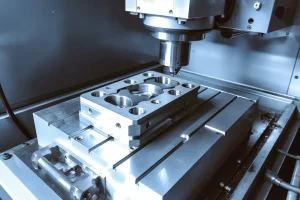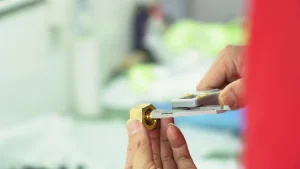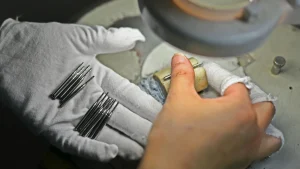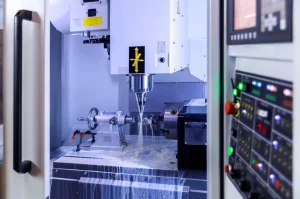In the process of precision CNC machining, avoiding contamination and damage is essential to ensure machining quality and equipment life. Here are some effective measures:
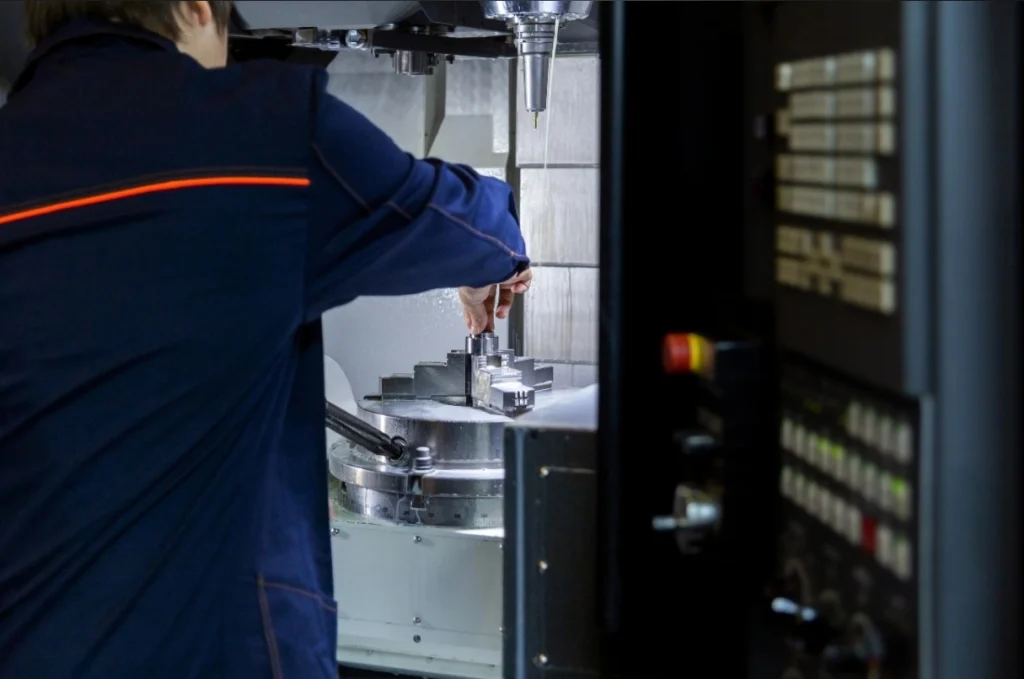
Work environment management
Keep clean:
The floor, walls and equipment surfaces of the processing workshop should be cleaned and wiped regularly to prevent dust and debris from accumulating. For example, use industrial vacuum cleaners and dust-free wipes to clean the workshop every day to reduce dust particles suspended in the air.
For precision CNC machine tools, set up special protective covers or closed processing areas to prevent chips and coolants generated during processing from splashing onto key components of the machine tools, such as CNC systems, motors and precision guide rails.
Control temperature and humidity:
Precision processing has strict requirements on ambient temperature and humidity. Install air conditioning and humidity control systems to control the workshop temperature at 20℃±2℃ and relative humidity within the range of 40% – 60% to avoid thermal deformation of parts and machine tools caused by temperature and humidity changes.
Avoid setting up heat sources around the machine tools or air conditioning outlets blowing directly to the machine tools to prevent local temperature changes from affecting processing accuracy.
Raw material and workpiece processing
Raw material cleaning:
Before processing, clean the raw materials thoroughly to remove oil, rust and impurities on the surface. For example, use organic solvents to clean metal materials, or use sandblasting to remove the surface oxide layer.
For parts with high precision requirements, the raw materials can be placed in a clean storage environment before entering the processing workshop, and sealed packaging can be used to prevent contamination during storage and transportation.
Workpiece clamping protection:
Choose appropriate clamping tools, such as soft jaw chucks, high-precision flat-nose pliers, etc., to avoid damage to the workpiece surface during clamping. When clamping, add soft gaskets, such as copper sheets or rubber pads, to the contact parts between the workpiece and the fixture to prevent the workpiece from being clamped.
For thin-walled or easily deformed workpieces, special clamping methods, such as vacuum adsorption or auxiliary support devices, are used to ensure that the clamping force is evenly distributed and reduce the possibility of workpiece deformation.
Processing technology control
Tool selection and use:
Select appropriate tools according to the processing materials and precision requirements. For example, when processing carbide materials, use coated carbide tools with high hardness and wear resistance.
Before using the tool, check whether the cutting edge is intact. Avoid using damaged tools for processing to avoid vibration during the processing, which may affect the processing accuracy and damage the workpiece and machine tool. At the same time, replace the tool regularly to prevent excessive wear of the tool and cause a decrease in processing quality.
During the tool replacement process, the operator should wear clean gloves to prevent oil and impurities on the hands from being contaminated on the tool and tool handle, affecting the installation accuracy and service life of the tool.
Cutting parameter optimization:
Reasonably set parameters such as cutting speed, feed rate and cutting depth to avoid excessive cutting force causing workpiece deformation or machine tool vibration. For example, when processing thin-walled parts, reduce the cutting depth and feed rate, and use high-speed cutting to reduce the impact of cutting force on the workpiece.
According to the actual situation during the processing, such as tool wear, workpiece material changes, etc., adjust the cutting parameters in time to ensure the stability and processing quality of the processing process.
Coolant and lubrication management
Coolant selection and maintenance:
Choose a suitable coolant. Depending on the processing material and processing method, the coolant should have good cooling, lubrication, rust prevention and cleaning properties. For example, when processing aluminum alloys, use a special aluminum alloy cutting fluid to prevent oxidation and corrosion of the aluminum surface.
Regularly check the concentration, pH and cleanliness of the coolant, and replenish or replace the coolant in time. Remove chips and impurities in the coolant through a filter device to keep the coolant clean and avoid affecting the processing quality and machine tool service life due to coolant contamination.
Lubrication system maintenance:
The guide rails, screws and bearings of precision CNC machine tools require good lubrication. Regularly check whether the oil level and oil pipes of the lubrication system are unobstructed to ensure that the lubricating oil can be accurately delivered to each lubrication point.
According to the instruction manual of the machine tool, select the appropriate lubricating oil and replace it according to the prescribed cycle. For example, for high-precision ball screws, use high-level precision machine tool guide oil and replace it every 3-6 months.
Personnel operation specifications
Training and skill improvement:
Operators should undergo professional training and be familiar with the operating procedures, equipment performance and safety precautions of precision CNC machining. Operators should be organized to participate in skill training and assessment regularly to improve their operating level and quality awareness.
Operators should understand the characteristics of different processing materials, how to use cutting tools, and the impact of various processing parameters on product quality, and be able to make reasonable adjustments based on actual conditions.
Personal hygiene and operating habits:
Operators should change into clean work clothes and work shoes before entering the processing workshop to avoid bringing dust and impurities from the outside into the workshop. When operating the machine tool, wear clean gloves to prevent sweat and grease on the hands from contaminating the workpiece and machine tool.
Avoid placing irrelevant tools and items on the machine tool workbench to keep the workbench clean. After processing, clean the machine tool and work area in time, and properly dispose of chips and waste.

